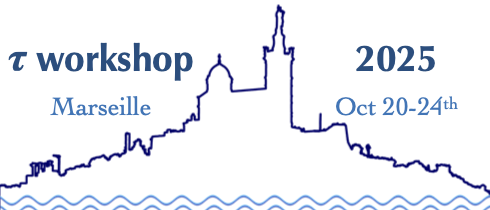Speaker
Description
The Electron-Ion Collider (EIC), with its state-of-the-art electron-Proton/Ion Collider (ePIC) detector, offers a unique opportunity to probe the structure of matter and search for new physics beyond the Standard Model (BSM). A particularly intriguing BSM scenario involves leptoquarks (LQ), hypothetical particles that couple quarks and leptons and can mediate rare charge-induced lepton flavor violating (CLFV) processes. In this study, we focus on the CLFV transition $e \rightarrow \tau$, which is predicted in several LQ models. This process yields a distinctive experimental signature at the EIC, especially when the $\tau$ lepton decays hadronically into three charged pions, a clean but rare decay mode. However, identifying this signature is challenging due to background processes such as Charged Current (CC) and Neutral Current (NC) Deep Inelastic Scattering (DIS), as well as Semi-Inclusive (SI) DIS, all of which can mimic the hadronic activity of $\tau$ decays. To isolate the signal, we employ realistic detector simulations and optimize selection criteria using Boosted Decision Trees (BDT) as part of a multivariate analysis. Assuming an integrated luminosity of $ 100~\mathrm{fb}^{-1}$ at the highest available center-of-mass energy configuration of $\sqrt{s} = 141~\mathrm{GeV}$ (achieved with 18 GeV electron and 275 GeV proton beams), the EIC will significantly improve the current bounds in LQ-mediated $e \rightarrow \tau $ transitions, surpassing the previous limits set by HERA. In this talk, I will present our study of the CLFV process $e \rightarrow \tau$ and the sensitivity to leptoquarks, highlighting the EIC’s potential for new physics beyond the Standard Model.
